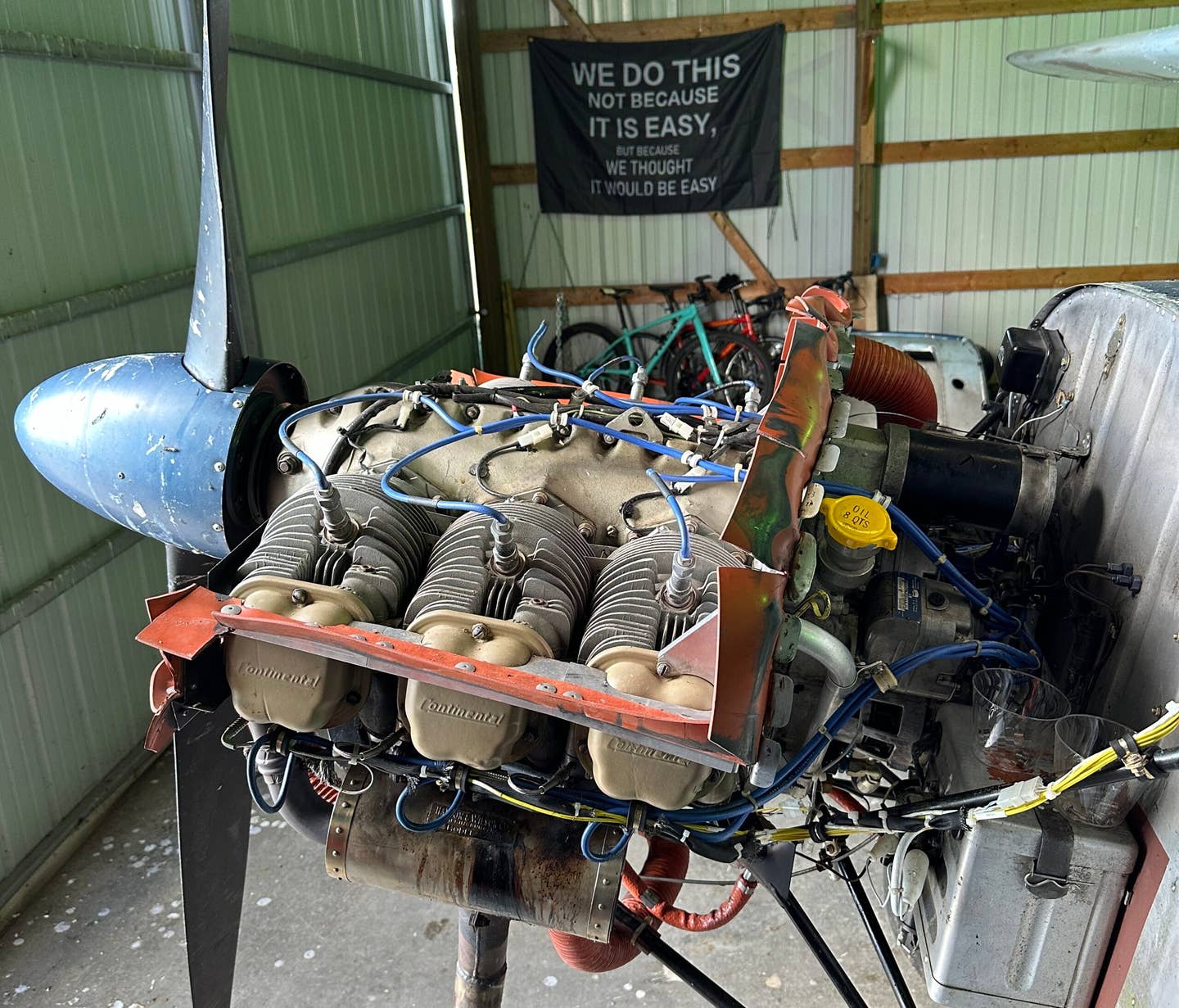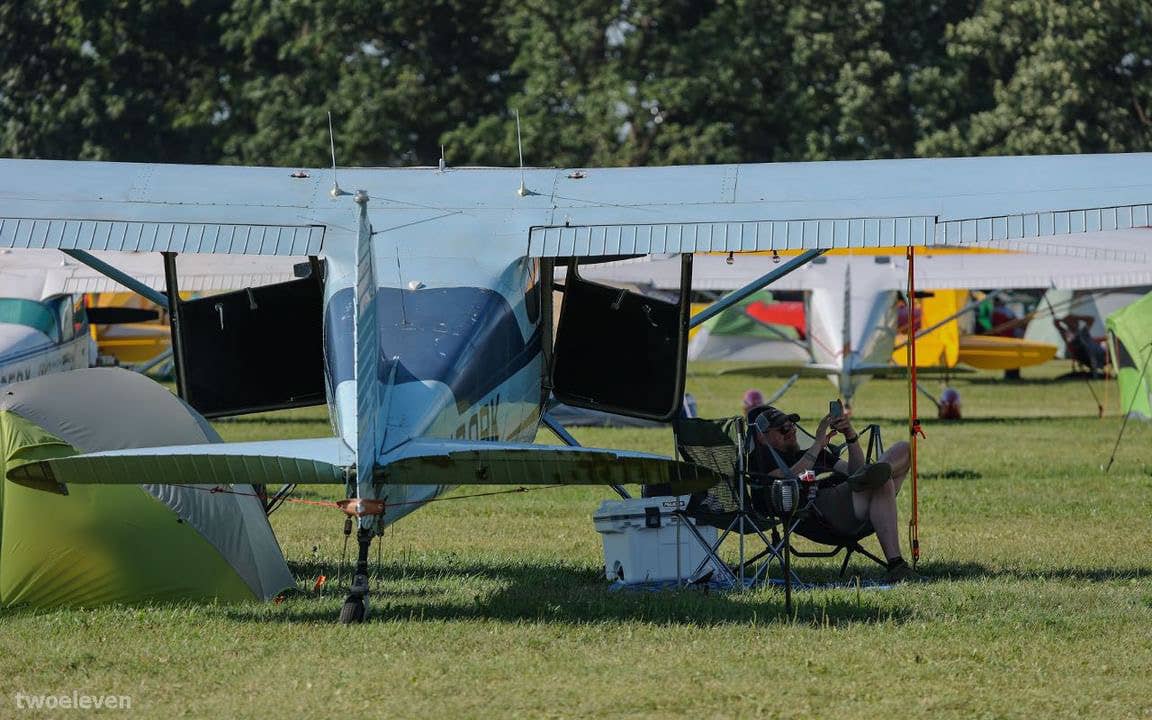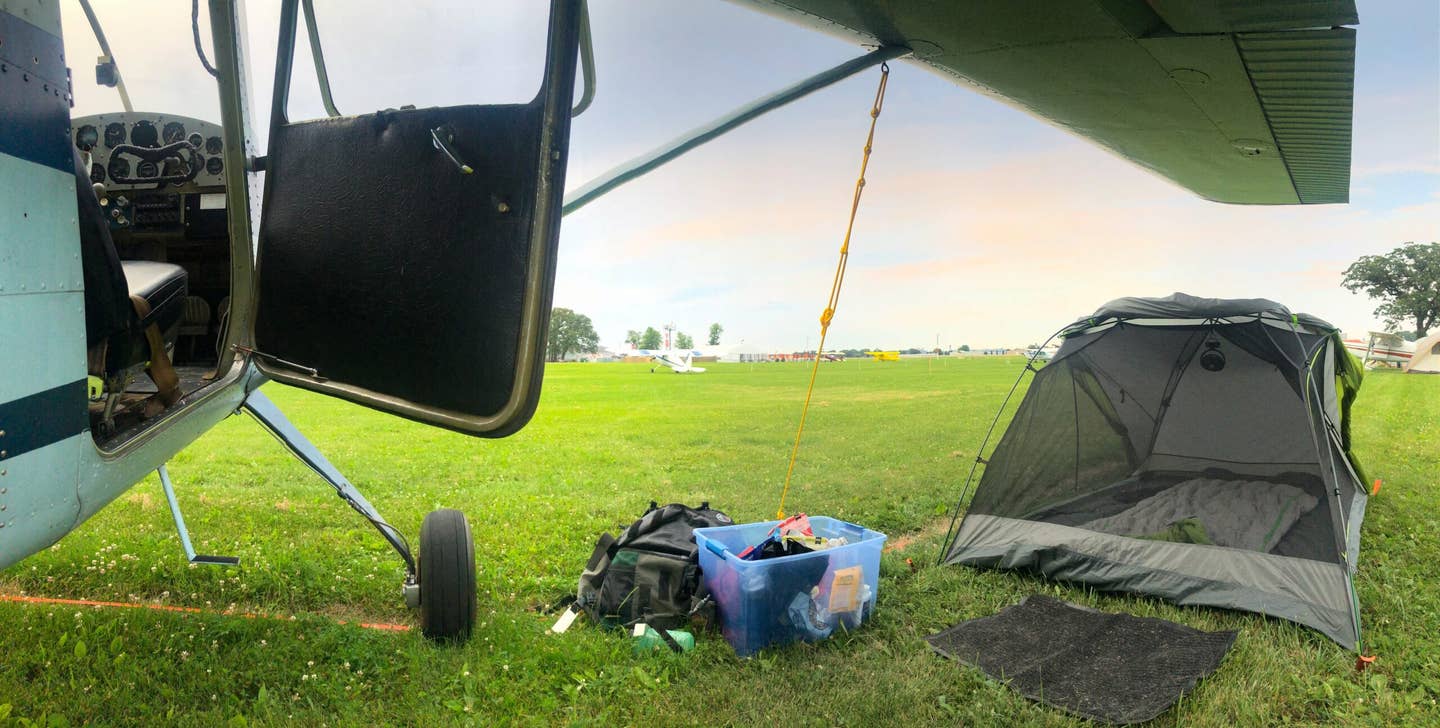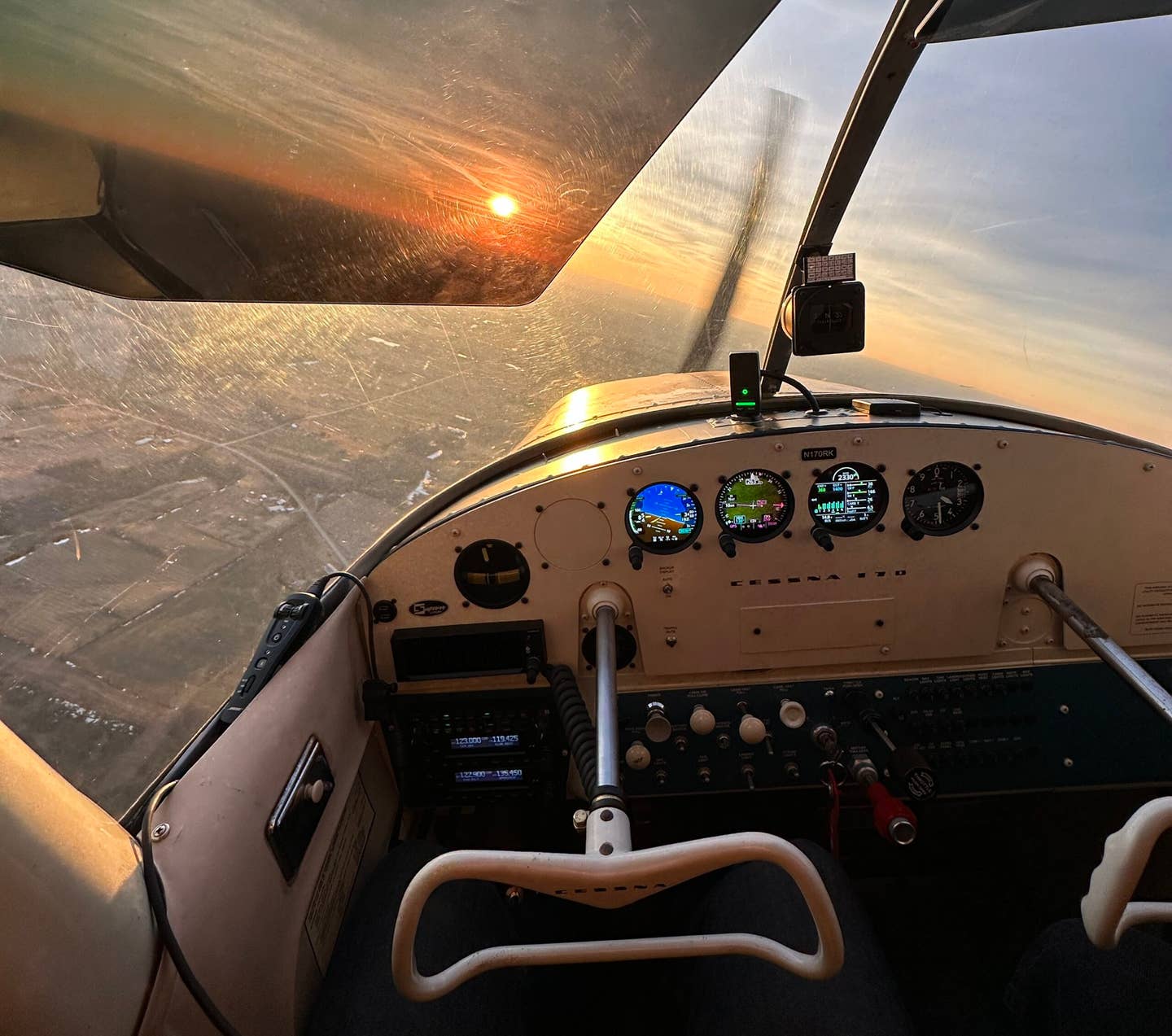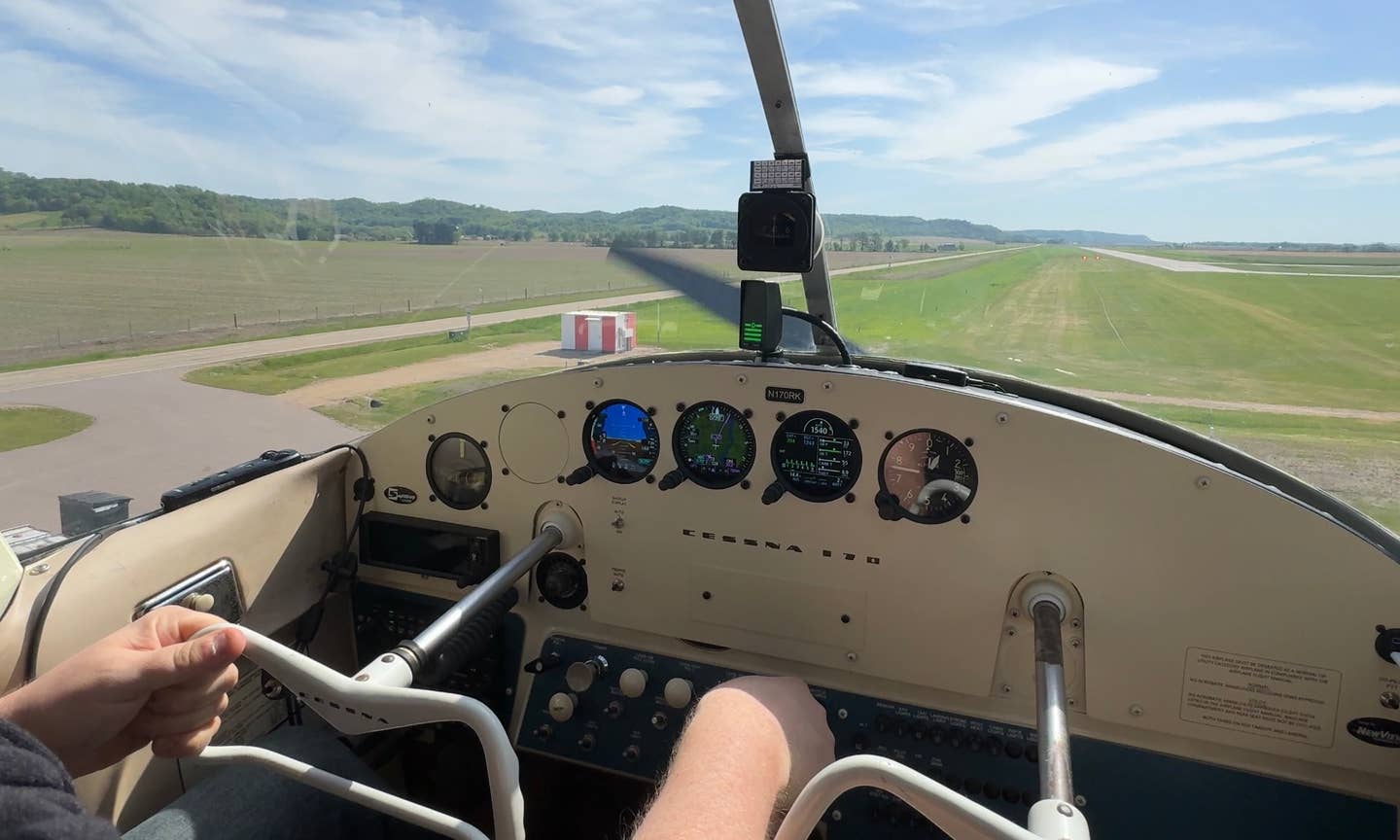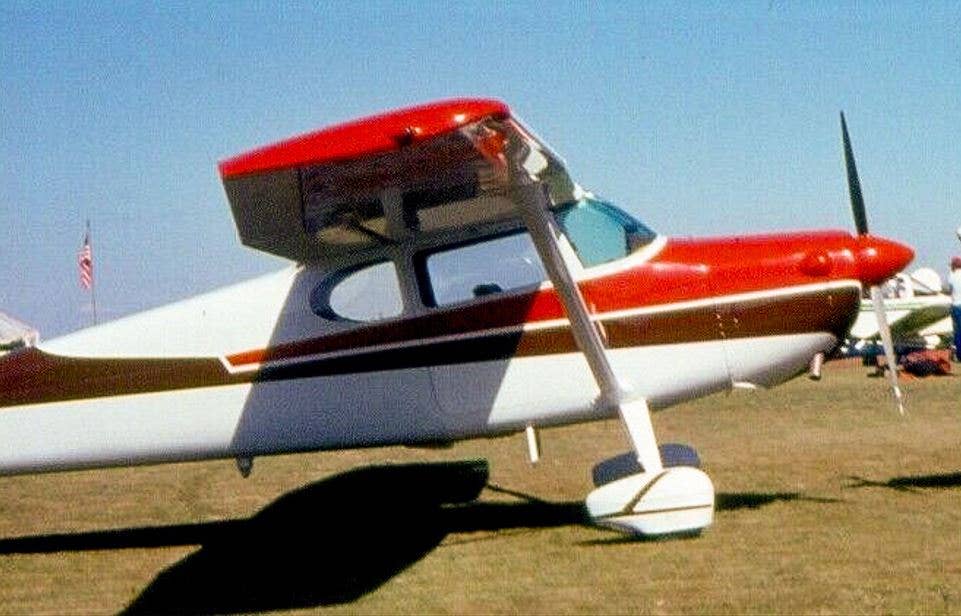Finding the Perfect Hangar Isn’t So Easy
When the search for an aircraft home starts late, a stressful chase ensues, and lessons are learned.
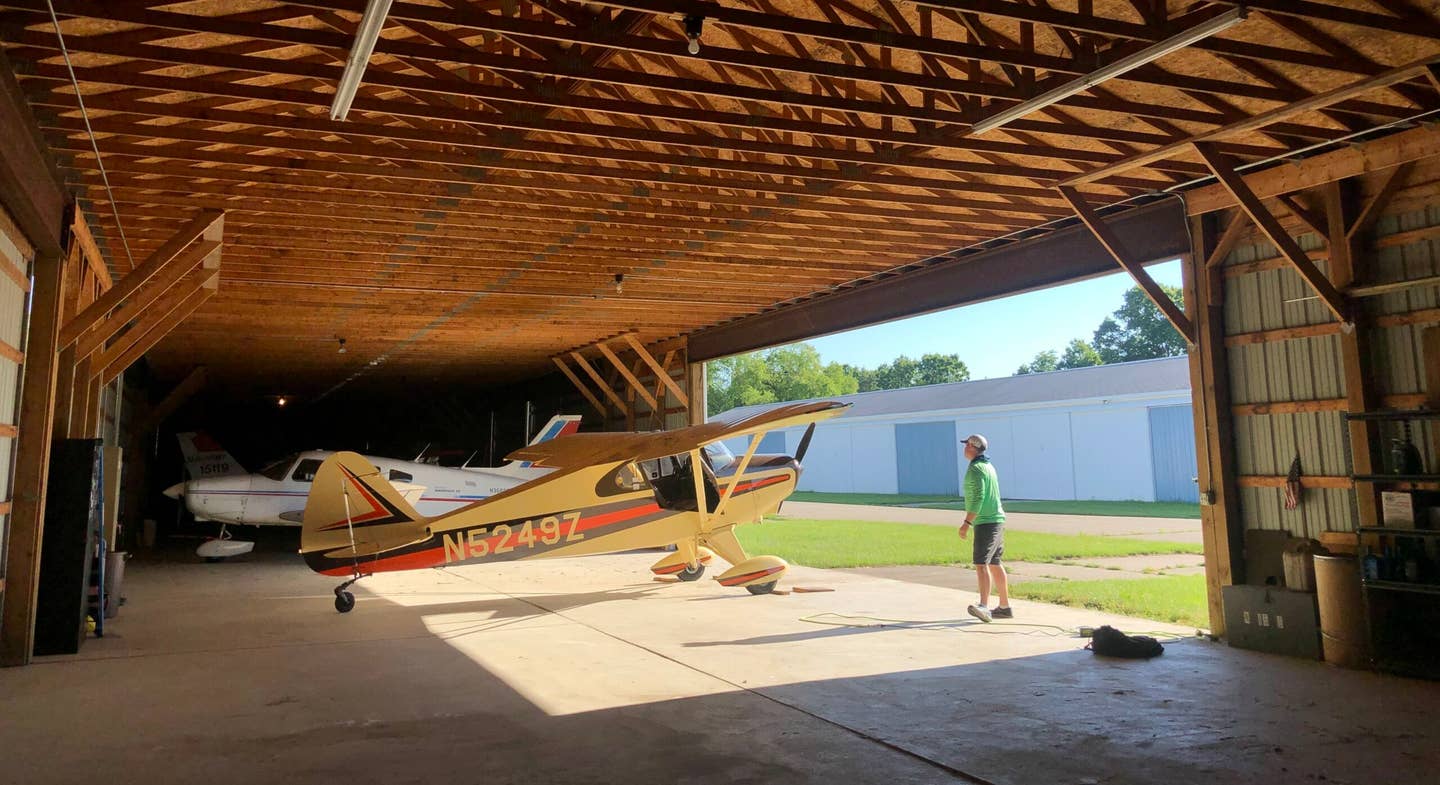
A safe, secure place to keep your pride and joy can be difficult to find, but is well worth the effort. [Photo: Jason McDowell]
When your airplane search becomes serious, with money in the bank and the initial research complete, other aspects of life tend to fall to the wayside. Like a shark sensing blood in the water, your focus narrows. You fixate on locating your prey and making the kill. Things like grocery shopping, household maintenance, family functions, and most other normal adult responsibilities all take a back seat to the hunt. In my case, so too did the whole idea of finding a hangar.
I always had a vague, nebulous notion that at some point, I’d have to learn about hangars. I certainly knew they existed, but I had no clue how to determine which airports had availability and what the going rates were, much less how to get one of my own. These were details that could be ironed out later, I reasoned. No sense in entertaining such distractions until it became absolutely necessary.
This necessity became readily apparent the moment I agreed to purchase an airplane on the other side of the country. Suddenly, visions of hail damage and harsh Wisconsin winters clouded my thoughts as I scrambled to determine what hangars were available—and where.
A New Hunt Begins
Well-accustomed to the process of searching for aircraft on the web, I leapt online to see what I could learn about local hangar availability. It didn’t take long to discover that this was a dead end. Although some hangar-specific classified sites did exist, they either contained listings that were many years out of date, or they lacked listings in my area altogether.
Airport websites also proved to be a dead-end. Only the two largest airports in my area even had websites, and neither provided any detailed information about hangar rental. They simply instructed interested parties to contact the local FBO or individual airport manager via phone for details. It was looking like I’d have to go through this process for each individual airport in my area.
Fueled by low-level panic and equipped with unlimited minutes on my cell phone plan, I brought up a sectional chart of my area and began my research. Starting with the most geographically convenient public airports, I looked each up on airnav.com, found the phone number for the airport managers, and called about six of them to inquire about hangars. Not surprisingly, the larger, busier airports in town had either zero availability or limited availability at very high rates. Although $400 to $500 per month might be a bargain in San Francisco or New York City, it seemed like highway robbery in southern Wisconsin.
One by one in a gradually expanding radius from home, I looked up the airport managers for all the other public airports near me and called every last one. Each was friendly and helpful, and each informed me that, unfortunately, they had no availability. Before long, I had established that when it came to public airports, I had the options of either paying exorbitant prices locally or paying very slightly less exorbitant prices at airports 50 miles away.
I was disheartened. The excitement of finding my dream airplane was quickly becoming dampened by the notion that I’d have nowhere to keep it…or that I’d have to blow my operating budget on expensive hangar rent.
As I gazed at the sectional chart, a new thought occurred to me. Although there were only about four or five public airport options in my relatively large county, it was positively littered with private airfields. There were at least 10 or 12 within reasonable driving distance. Maybe one of them had some hangar space, I thought.
I headed back to Airnav to investigate some of these privately owned options. Plugging in an identifier, I was able to view detailed information, including runway length, the owner’s contact information, and even a link to view the airport on Google Maps. Before calling to inquire about hangar space, I examined each option carefully via satellite view and Google Street View. Some—with only a single structure and a runway that looked like it was overgrown and unused—were obviously not good options. But others stood out.
The first one to catch my eye had a beautiful 2,600-foot grass runway and was home to more than 20 individual hangars, many apparently large enough to house multiple airplanes. My call to the airport manager revealed a couple of intriguing possibilities.
First, he mentioned an older gentleman who might have an old T-hangar he might be willing to rent out or even sell outright. The owner was apparently using it to store assorted junk. And second, there might be an opportunity to buy into the airfield itself, obtain a fractional share, and then be provided with a plot upon which I could build my own hangar.
The idea of owning part of an airfield and building my own hangar was intoxicating, but the reality of having to come up with tens of thousands of dollars above and beyond what I was already spending on my airplane promptly sobered me up. I took down the older gentleman’s contact info and gave him a call.
When I spoke with him, he confirmed that he did indeed have an old hangar he might be willing to sell or rent out. He described it as “ramshackle” and gave me permission to go check it out. I did so later that afternoon and confirmed that it was indeed as described. It was built from old, corrugated metal, it had a dirt floor, and the rusty doors appeared difficult to open. More concerning was its proximity to the busy county highway. Positioned about 15 feet from the edge of the pavement, I could tell that every winter, the snowplows would blast the back and side walls of the hangar with a nasty mixture of salt and slush. When my follow-up calls to the owner went unanswered, I chalked it up as a win and continued my search.
One after another, I contacted the owners of any private airfield that looked as though it might have hangar space for an additional airplane. And one by one, each owner informed me that for one reason or another, there was no vacancy. Finally, I called the owner of a private airfield in a small town about 20 minutes from home. His name was John. He was a builder by trade and said he did have a few very inexpensive hangars available. Inexpensive to the tune of about $125/month. The catch? They were open on one side, lacking doors altogether. Intrigued, I asked if I could go check them out in person, and he said I’m welcome anytime.
After a shorter-than-expected, 18-minute drive, I arrived at the airfield to meet John and see the hangars. They were as described—very basic, open-sided hangars. Some had full dirt floors, others had concrete strips in the center. The open sides all faced east, which was fortunate as most of our harsher weather blew in from the west. John explained that although he didn’t plow the runway in the winter, they only had to stop flying for about two months every year.
The airport was kept neat and tidy. Although the runway was listed as 2,500 feet in length, it was effectively about 3,000 feet thanks to a nicely displaced threshold. Mogas was available on the field for an impressively low price per gallon—a fantastic amenity. For the downside of having to deal with an open-sided hangar, there were some significant upsides, and I decided to jump on the opportunity.
I ended up using that hangar for nearly six months, and it proved to be a solid interim option. As winter approached, however, the prospect of being snowed in for two months seemed less and less appealing. I was also growing tired of constantly having to anticipate and deal with wildlife that could access my airplane at their leisure. Birds would occasionally roost above my airplane, and their corrosive droppings could be a problem. Preflight inspections tend to catch most instances of nests being built in the engine compartment, but I was always worried about the prospect of overlooking part of a nest and later having it ignite in flight.
I kept searching for better year-round options, and I ultimately opted for a community hangar at a more distant airport for about $220/month. There, I’d have access to on-field maintenance, the airplane would be fully enclosed and protected from the elements, and the airport surfaces would be kept clear of snow. I didn’t like the idea of my airplane sharing space with others, but in balance, it seemed like a worthy tradeoff.
Lessons Learned
Looking back, I learned a few lessons. First, one must be proactive when seeking out a hangar. Cold calling every airport manager in your area will likely uncover options…if not in the form of hangar vacancies, then likely in the form of leads where vacancies might be available.
I also came to learn that the search for your perfect hangar might be an ongoing, multi-step process. Go ahead and get yourself on the waiting list for your first choice, and maybe even for your second and third choices. In the meantime, put your detective hat on and get to work seeking out other options.
Some of those options might not be readily apparent. For example, I know of a private airpark in Michigan with about 12 homes, each with its own hangar. I happen to know that as of right now, only two of those hangars are being used for airplanes. The rest, sadly, have been bought by non-aviation types. They’re using their hangars to store things like boats and recreational vehicles. Some time spent knocking on doors might result in a rental agreement that benefits both you and the homeowner alike.
With some patience, determination, and creativity, I dare say hangars can be found in even the most sought-after areas. The key? Begin your search early. If you foresee a purchase within a month or two, it just might be worth jumping on an opportunity and paying a couple months’ rent to ensure your future pride and joy has a safe, secure place to call home.

Subscribe to Our Newsletter
Get the latest FLYING stories delivered directly to your inbox

